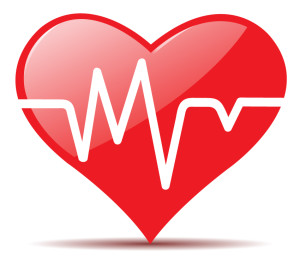 Hypertension means high blood pressure, and in the United States, around 30 percent of the population has it.
Hypertension means high blood pressure, and in the United States, around 30 percent of the population has it.
All adults should have their blood pressure checked every one to two years.
Blood pressure readings consist of two numbers: the systolic, which is the top number, and the diastolic, which is the bottom number. It is measured in millimeters of mercury (mmHg).
Hypertension is defined as having either a systolic blood pressure more than 140 mmHg, or a diastolic blood pressure more than 90 mmHg. If a patient has elevated blood pressure on more than one office visit, it may need to be treated. Remember, though, it is quite common to have high blood pressure in the doctor’s office, but then have normal pressures at home.
Many factors contribute to hypertension, including a family history of high blood pressure, excessive salt, caffeine or alcohol use, weight gain, physical inactivity, smoking or drug use and race (African Americans have higher rates of hypertension). The older you are, the more likely you will have hypertension that needs treatment.
Aside from these factors, kidney disease, hormone abnormalities, sleep apnea, vascular disease, a deficiency of Vitamin D and drug use can all increase the risk of hypertension.
It is important to treat hypertension to avoid many other health complications. The most common complication associated with hypertension is stroke, as well as intracerebral hemorrhage (bleeding in the brain).
Other complications include coronary heart disease, heart failure, arrhythmias, chronic kidney disease and vision problems. It can even contribute to trouble with memory or understanding concepts. If hypertension is treated appropriately, the risk of these complications can be significantly reduced.
Although medications are commonly used, improving lifestyle factors can reduce blood pressure. It is important to reduce salt intake, lose weight for obese individuals, increase the proportion of fruits and vegetables, exercise on a regular basis and minimize stress. Limiting alcohol intake and stopping smoking also can be beneficial. In addition to these measures, there are many different medications that can be used, and your doctor will help you determine the best individual choice for you. It is common to often need more than one medication to achieve desired goals for blood pressure.
All adults should monitor their blood pressure at least every two years, and it should be checked in both arms. If your blood pressure is coming close to 140/90, you should consult your physician.
Dr. Gautam Kedia bio
Board certified in echocardiography, nuclear cardiology and cardiac CT angiography, Gautam Kedia, MD, is a cardiologist specializing in diagnostic and preventative cardiology. Dr. Kedia treats patients with a wide range of acute and chronic heart diseases, which include congestive heart failure, coronary artery disease, arrhythmias and heart valve disease. He also works with patients to identify and modify other factors that put them at higher risk for heart disease, using traditional risk factors, as well as contemporary cardiac imaging and lab technology. He also specialized in treatment of venous reflux disease.
Dr. Kedia, an Arizona native, completed medical school at the University of Arizona, in Tucson. He was then accepted to an internal medicine internship and residency at Cedars-Sinai Medical Center in Los Angeles, Calif., which he completed in 2008. Dr. Kedia went on to participate in a cardiovascular disease fellowship also at Cedars-Sinai Medical Center and the Greater Los Angeles VA Medical Center, where he served as chief fellow from 2010 to 2011.
Dr. Kedia is an active participant in hospital cardiology committees and meetings. In his free time, he enjoys sports, reading and spending time with his wife, two daughters and his parents.

